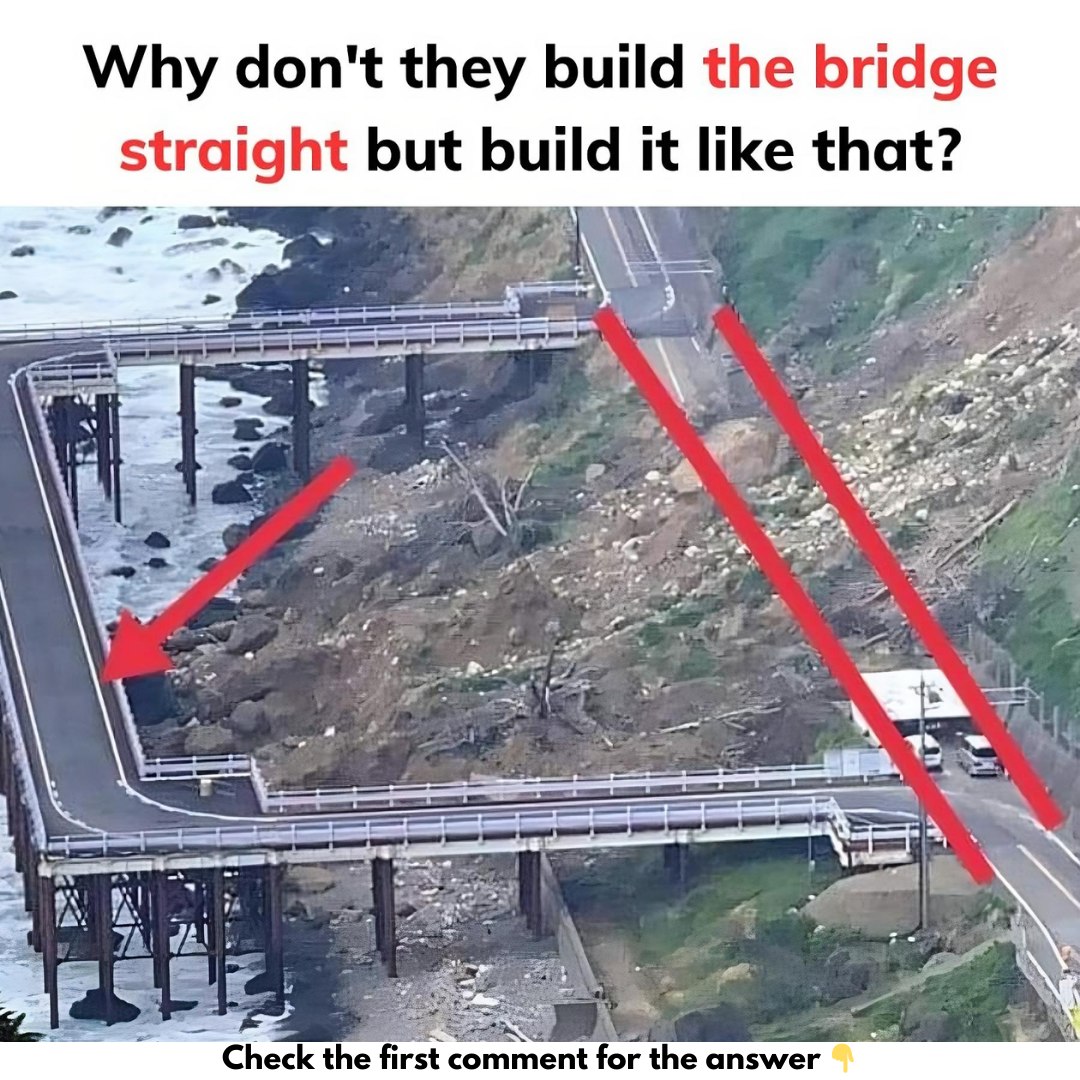Bridges serve as more than just a way to cross rivers, valleys, or roads—they’re feats of engineering that balance design, function, and safety. If you’ve ever seen a bridge that curves instead of following a straight path, you may have wondered why. In this article, we’ll explore the reasons why engineers sometimes choose curved designs for bridges, especially when it comes to ensuring safety and longevity in areas prone to natural hazards like landslides.

The Science Behind Curved Bridges
At first glance, a straight bridge might seem like the most logical and efficient way to connect two points, as it’s the shortest distance between them. However, in real-world settings, building a straight bridge isn’t always the best option. Curved bridges may appear more complicated, but they’re often the optimal solution to address environmental and structural challenges. These curves aren’t just for aesthetic appeal; they serve important practical purposes that help protect the bridge and extend its lifespan.
Protection from Natural Hazards
One of the key reasons for designing a curved bridge is to protect it from natural disasters like landslides. In hilly or mountainous areas where landslides are common, a straight bridge may be more vulnerable to damage. A landslide hitting a straight bridge exerts its full force directly on the structure, which could lead to significant damage or even collapse.
Curved bridges, on the other hand, have an advantage in these situations. The curved shape helps distribute the force of a landslide more evenly across the entire structure. Instead of all the pressure focusing on one spot, the force is spread out, reducing the chance of severe damage in any particular area. This ability to divert and distribute forces makes curved bridges a safer option in areas prone to landslides or other natural hazards.
Structural Stability and Load Distribution
In addition to protecting against landslides, curved bridges offer structural benefits that make them more stable overall. Bridges must withstand both vertical loads, like the weight of vehicles and pedestrians, as well as horizontal forces, such as wind and seismic activity.
A curved bridge distributes these loads more evenly across its structure compared to a straight bridge. In straight bridges, pressure tends to concentrate on certain points, which can create weak spots. Curved designs help to spread out the forces, reducing the risk of any single part of the bridge becoming overstressed. This not only increases the bridge’s stability but also helps it last longer by minimizing wear and tear on specific sections.
Navigating Challenging Terrain
Another reason for incorporating curves into bridge design is to accommodate the natural landscape. In areas with uneven terrain, mountains, or rivers, laying down a straight bridge can be nearly impossible. Engineers often have to work around the existing geography, which may require curves to avoid obstacles like steep cliffs or rock formations.
Instead of altering the landscape by blasting through mountains or diverting rivers, engineers can use curved bridges to work with the natural environment. This not only makes construction easier but also preserves the surrounding ecosystem, which is an important consideration in modern engineering.
Enhancing Visual Appeal
While functionality is always the top priority in bridge design, aesthetics often play a role as well. Curved bridges can be visually striking and blend more harmoniously with their surroundings. They create a flowing, natural look that complements the landscape, unlike the stark, rigid lines of straight bridges.
Famous examples like San Francisco’s Golden Gate Bridge or Singapore’s Helix Bridge show how curves can enhance a structure’s beauty. These bridges not only serve a practical purpose but also become landmarks, shaping the identity of their location.
Improving Traffic Safety
Safety is another critical consideration, and curved bridges can improve traffic flow in certain situations. For example, if a bridge is connecting two points on a winding road, building a straight bridge might require sharp turns at either end, which could increase the risk of accidents. A curved bridge, however, follows the natural path of the road, allowing for a smoother transition and safer driving conditions.
Modern Materials and Technology
Advances in construction materials and techniques have made building curved bridges more feasible than ever before. Modern materials like steel and concrete offer greater flexibility and strength, allowing engineers to incorporate curves into their designs without compromising durability. These materials, combined with sophisticated computer modeling, make it possible to build curved bridges that can handle complex stress patterns and withstand the elements for years to come.
Conclusion: More Than Just a Design Choice
Curved bridges aren’t just about looking pretty—they solve a variety of engineering challenges. Whether it’s deflecting landslide forces, distributing loads more evenly, navigating tricky terrain, or enhancing traffic safety, curved bridges offer practical benefits that straight bridges often can’t. And as a bonus, they frequently add to the beauty of their surroundings, making them both functional and aesthetically pleasing.
So, the next time you see a curved bridge, remember that there’s more to its design than meets the eye. Each curve is carefully calculated to meet the demands of the environment, protect against natural hazards, and ensure the safety of everyone who crosses it. These engineering marvels remind us that sometimes, the best way to connect two points isn’t always a straight line.





